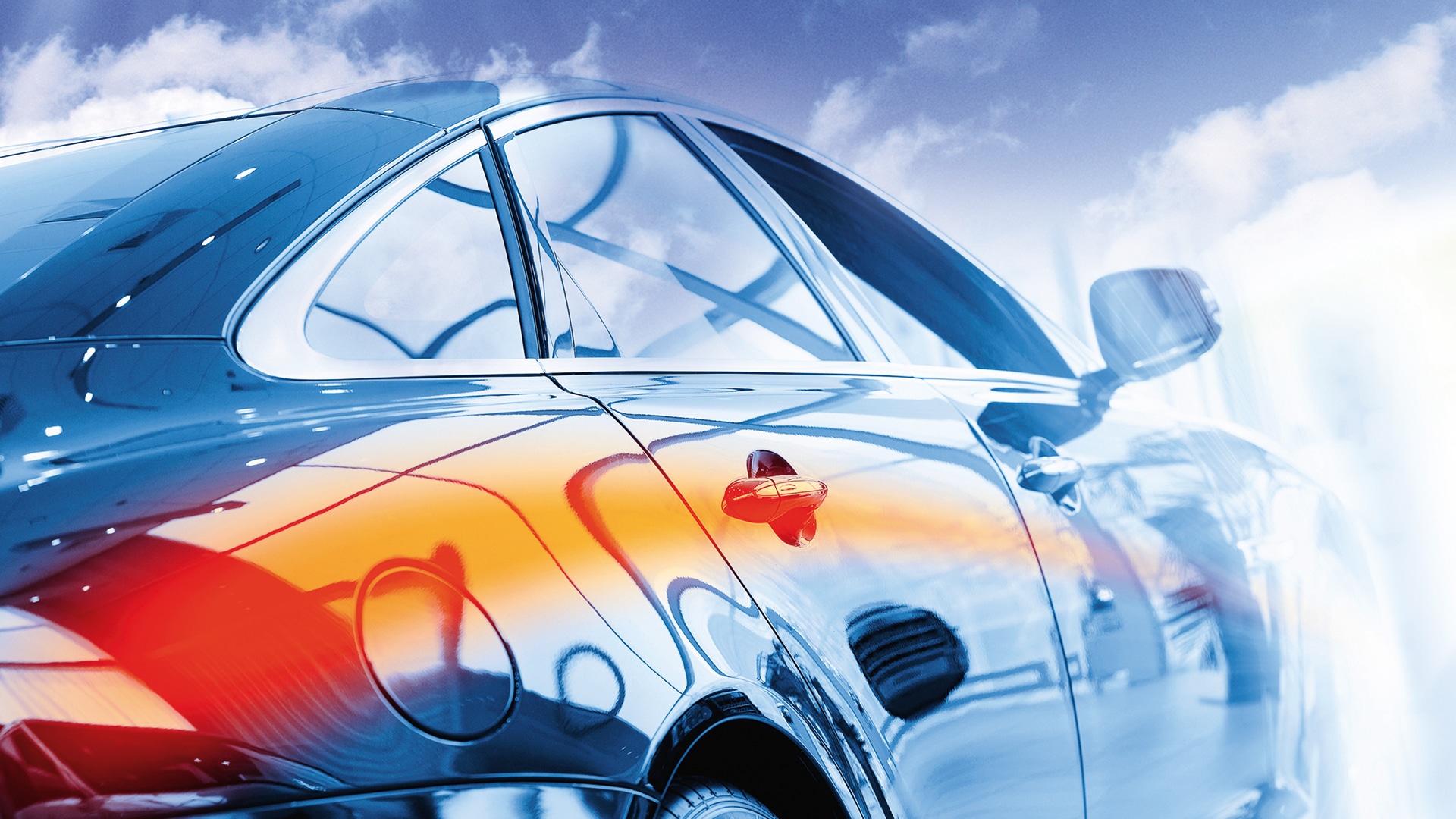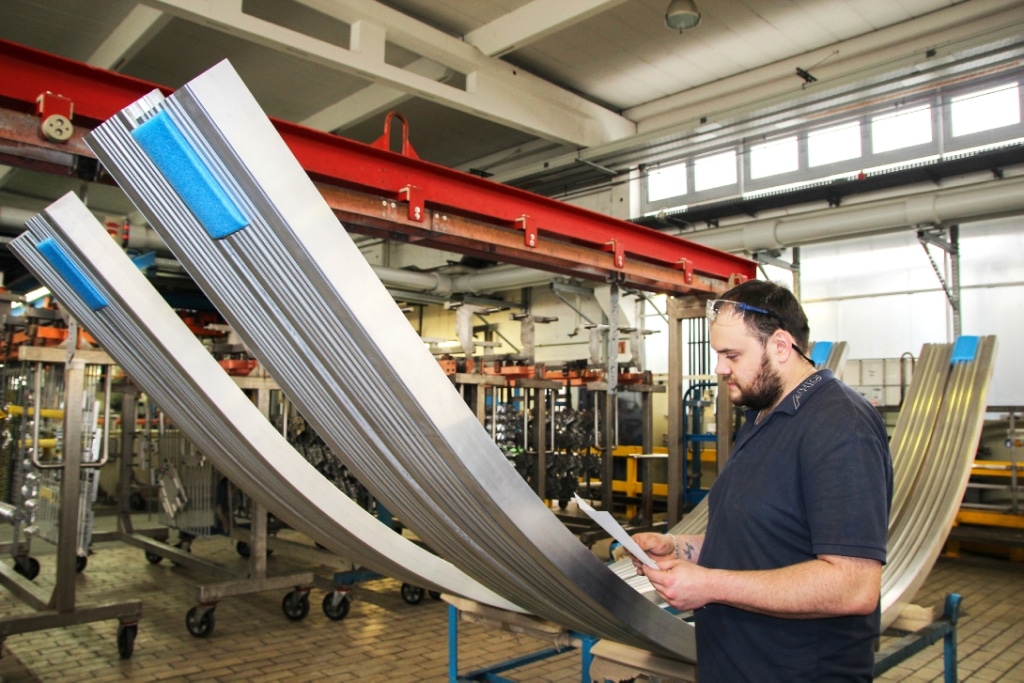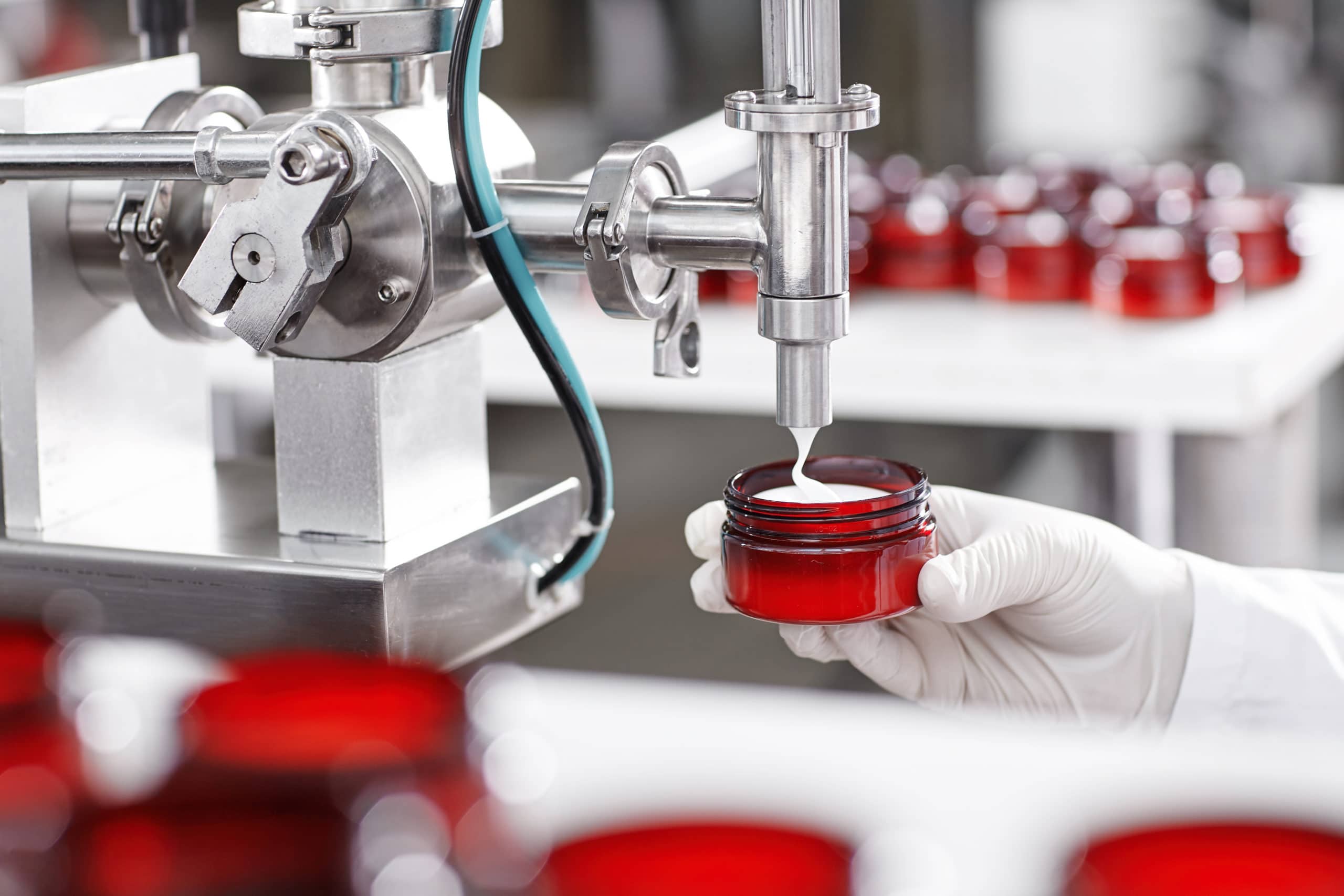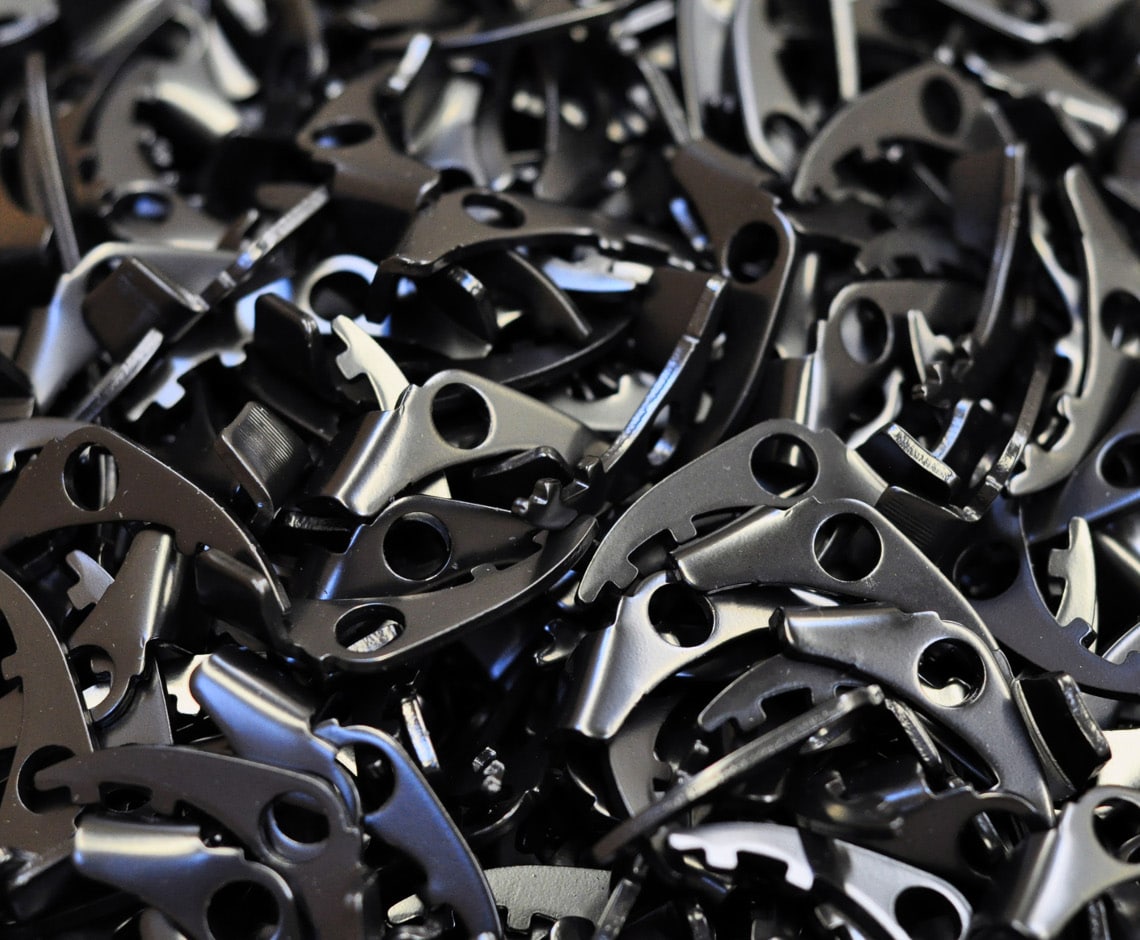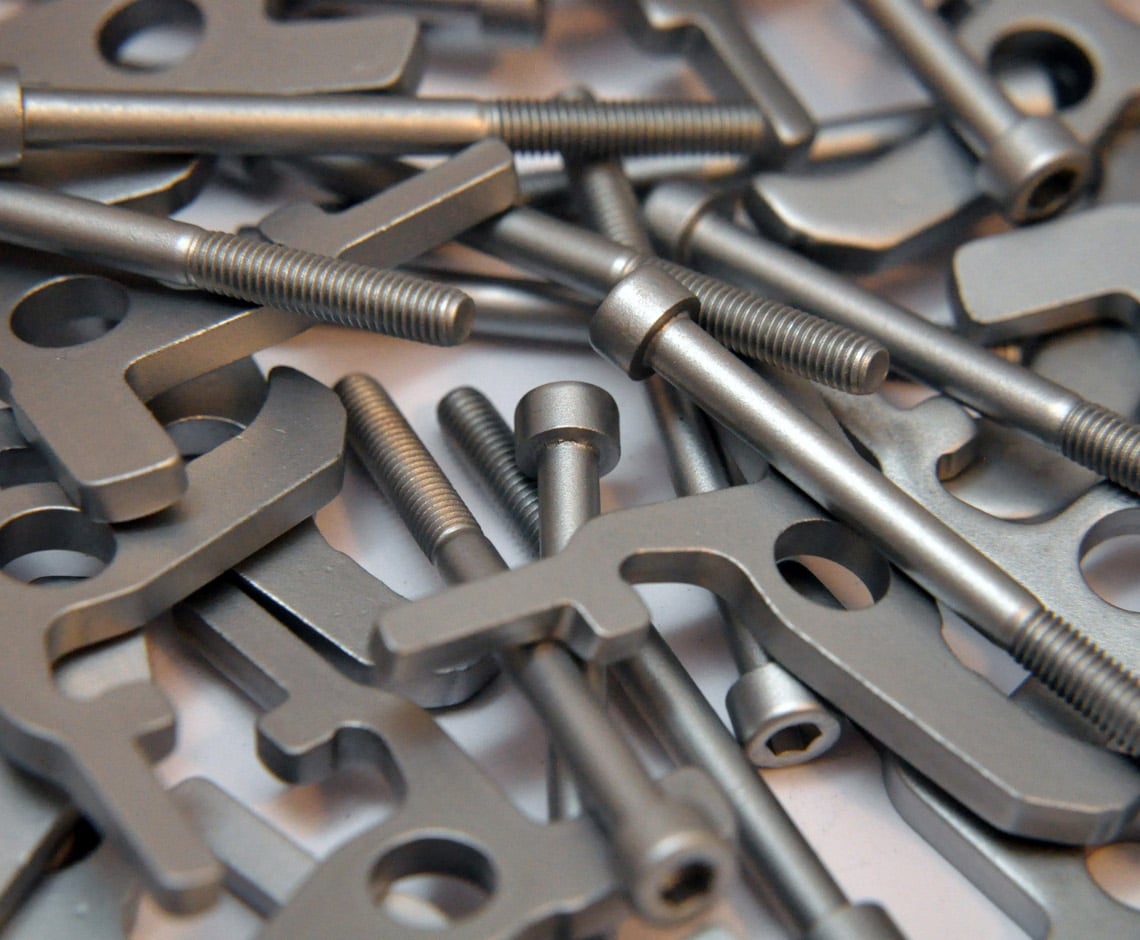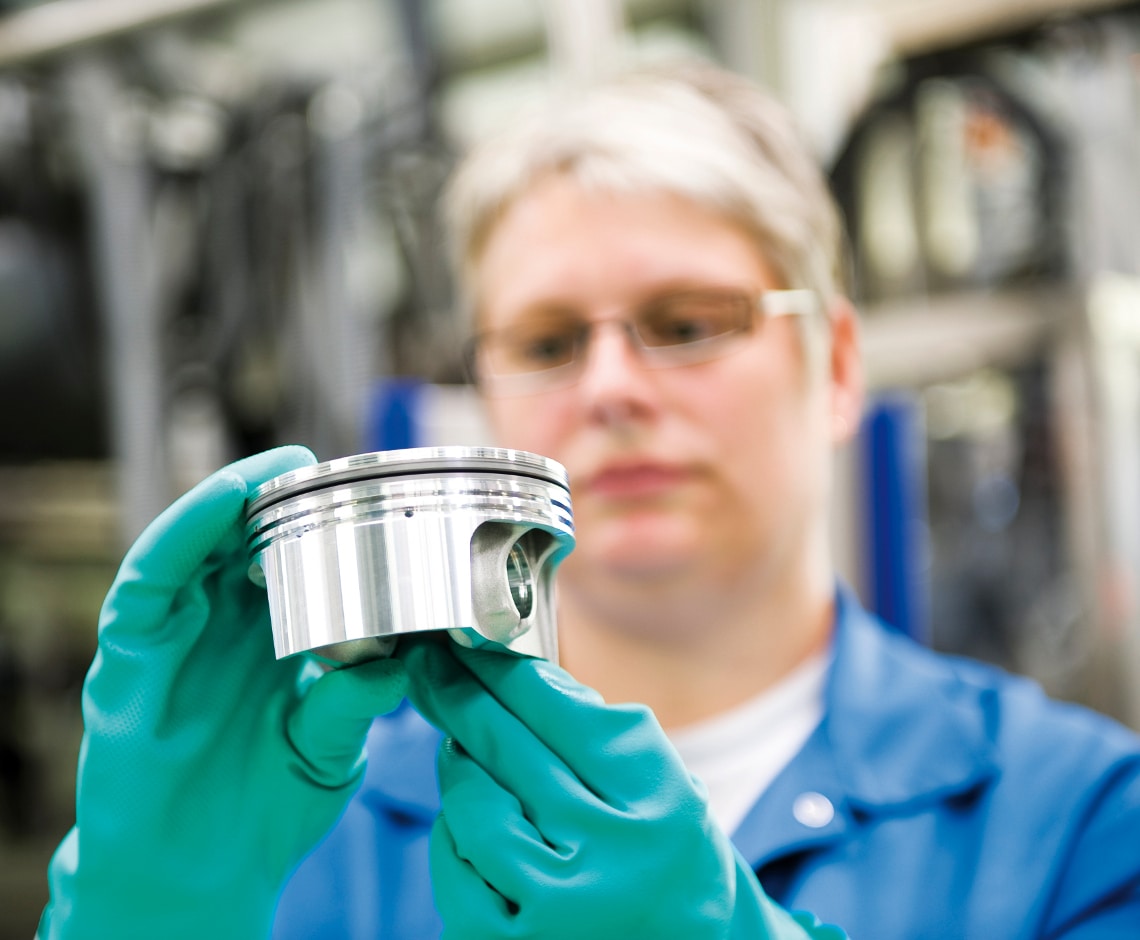eco-friendly coating alternatives.
chrome cadmium substitute
what is chrome and cadmium substitute?
IVD aluminum coating and SurTec® 650 chromium(VI)-free passivation
For chrome and cadmium substitutes, we use a Physical Vapour Deposition (PVD) process and produce a pure, extremely thin aluminium layer in a high-vacuum process called IVD aluminum coating. The chromium substitute is suitable for almost all plastics and metals. The cadmium substitute is intended for steel and titanium components. In addition, we offer chromium-free passivations as protective layers on metallic surfaces, which prevent or greatly retard corrosion of the base material. Base materials are aluminium and magnesium. Such coatings are also referred to as chemically produced conversion coatings.
Originally developed by McDonnell Douglas as a substitute for cadmium coatings on steel and titanium components, IVD (Ion Vapor Deposition) is a PVD (Physical Vapor Deposition) proceess during which pure aluminum coatings are applied to different materials.
IVD coating
how do IVD coating processes look like?
IVD coating processes are performed as follows: First of all, the components to be coated are degreased to remove any machining or dewatering oils. The next process step consists in fine sandblasting. On the one hand, the surface is mechanically cleaned; on the other hand, a profile with a large surface is created. The latter supports the coating’s physical bonding with the substrate.
During the process, the parts remain fixed on an electroconductive rack inside a vacuum coating chamber. The parts are moved into the coating chamber, which is then evacuated. Inert gas is then led into the chamber, while electric voltage is applied. This leads to plasma glow discharge, which manifests itself in a violet glow inside the chamber. The result: a very clean surface on the substrate.
After this process has been completed, the actual coating process can start. Aluminum wire is now added to a series of overheated ceramic crucibles. High voltage is then applied to generate very high temperatures, whereupon the aluminum turns into electrically charged vapor. The negatively charged aluminum atoms move through the vacuum and deposit themselves onto the parts to be coated, which are electrically grounded.
properties of the IVD coating process
A substitute for cadmium, IVD aluminum also offers good corrosion protection in the high temperature range. The coating can avoid bimetallic or galvanic corrosion. In any case, it is possible to increase the corrosion resistance by a subsequently applied chemical conversion layer.
Another major advantage of IVD aluminum coatings is that they can be varnished with very little surface pretreatment. The surface is suitable for many varnishes, including generally required, liquid-tight epoxy resin-based primer coatings and dry film lubricants.
Base materials
The coating is preferably applied to components made of steel alloys and titanium materials.
SurTec® 650
SurTec® 650 chromium(VI)-free passivation is applied in dipping, spraying or wiping processes. The process creates a slightly iridescent conversion layer and incorporates chromium(VI)-free particles for ideal corrosion protection.
properties of SurTec® 650
SurTec® 650 chromium(VI)-free passivation offers ideal corrosion protection and has a low electrical contact resistance. What is more, it is perfectly suitable for the post-treatment of anodized layers and as adhesive primer for lacquers, powder coatings and adhesives.
Base materials
SurTec® 650 chromium(VI)-free passivation is suitable for almost all technically interesting aluminum alloys. This process is also used for the passivation of magnesium alloys.
fields of application of IVD aluminum as an alternative for cadmium
IVD aluminum coatings are used, above all, in the aerospace industry and the defense technology sector. One example is the coating of titanium fastening elements used for the connection of aluminum assemblies.
The process is NADCAP-certified and approved for a number of aerospace companies, such as Airbus, Boeing, Bombardier, Leonardo, Rolls-Royce, Safran and UTC.
The extent to which the size and complexity of the components coated for these end customers may vary is astonishing: we are talking about small fastening elements as well as larger components, such as airframe components, motor components and composition metal assemblies.
fields of application of SurTec® 650 chromium(VI)-free passivation
SurTec® 650 chromium(VI)-free passivation has a low surface resistance, which makes it ideal for use in the electronics sector. Due to the high degree of corrosion protection on unvarnished surfaces, it is also ideal for use in the aerospace industry. Due to the sum of its properties, this coating is also popular in the automotive sector.
downloads
industries we serve
frequently asked questions
SurTec® 650 chromium(VI)-free passivation offers, inter alia, the following advantages:
- A low layer thickness and thus low dimensional changes
- A low surface resistance (ideal for use in the electronics industry)
- High corrosion protection on unvarnished surfaces
- Good adhesive primer for subsequent organic coatings (such as varnishing, powder coating or gluing)
To ensure excellent adhesion, it is of the utmost importance that the surface to which the coating is applied is absolutely clean and unpolluted. To this end, we perform a three-step cleaning process. First of all, the components are degreased. The second step consists in fine sandblasting with the aim of removing any oxides from the surface. The last cleaning step takes place inside the vacuum coating chamber.
There are many reasons why IVD aluminum coatings are used by the aerospace industry. IVD aluminum is, above all, supposed to offer galvanic protection in applications where titanium alloys, copper or steel are interconnected. One of the procedure’s major advantages is that the coating can be used on large components in lengths of up to 1.5 meters. However, bulky small parts, such as fastening elements or bushings, can easily be coated using drum processes.
Further advantages include:
- Improved corrosion protection for low-alloy steels, copper alloys or forged/cast aluminum
- Barrier and protective layers in aggressive environments, also in contact with aviation fuel
- Use of the pure aluminum layer as sealing / sealing surface
- Stable up to a temperature of 415 °C, electroconductive, good substrate for subsequent varnishing
- No risk of hydrogen embrittlement in high-strength steels
- Eco-friendly cadmium coating alternative
- Increasing availability of the process in the regions surrounding the aircraft manufacturers’ production locations
Yes, because these coating processes have been developed as a substitute for chromium(VI)- or cadmium-based layers which are considered carcinogenic. Environmentally harmful production processes as well as materials on component surfaces which might lead to health impairments are eliminated.
process locations
Any questions? Contact us directly or select a process location near you.
other processes
Burg
Germany 52.2509811.88427 burg@aalberts-st.com +49 3921 4829 0 show locationCormenon
France 47.97014060.8907598 ast.cormenon@aalberts-st.com +33 (0) 2 54 73 45 40 show locationDzierżoniów
Poland 50.732931316.6280222 dzierzoniow@aalberts-st.com +48 748108508 show locationKaufbeuren
Germany 47.91376710.6489502 kaufbeuren@aalberts-st.com +49 8341 6601 0 show locationKirkby-In-Ashfield
United Kingdom 53.1043759-1.2474762 nottingham@aalberts-st.com +44 1623 753 107 show locationUnsere Verfahren
Wir bieten weltweit alle Arten von Wärmebehandlungsprozessen an. Unsere Anlagen sind logistisch eng miteinander verknüpft, so dass Ihnen alle Verfahren zur Verfügung stehen. Erfahren Sie mehr zu unseren Wärmebehandlungsverfahren.
Heiß-Isostatisches Pressen (HIP) dient der Beseitigung von Porosität. Sie benötigen bei Lötverbindungen eine hohe mechanische Haltbarkeit und Unempfindlichkeit bei hohen Temperaturen? Wir bei Aalberts surface technologies bieten die Lösung durch Hartlöten (brazing).
Polymerbeschichtungen können auf viele Grundmaterialien aufgebracht werden und bieten lang anhaltenden Schutz. Sie sind mechanisch besonders gut mit dem Untergrund verankert und bieten verbesserte Gleiteigenschaften und/oder hohe Verschleißfestigkeit.
Mit 40 Jahren Erfahrung in der kontinuierlichen Veredelung von reel to reel können Sie sich auf Aalberts surface technologies verlassen, um innovative Lösungen zu finden. Unser Service umfasst Trommelgalvanik, kontinuierliche selektive Galvanik und Gestellgalvanik.
Fast alle metallischen Grundwerkstoffe können mit unseren selbstentwickelten und patentierten Verfahren durch Oberflächenbeschichtungen in ihren Eigenschaften optimiert werden, egal ob sie besonders hart, glatt, verschleißfest oder korrosionsbeständig sein sollen.

Discover our services
We offer all types of heat treatment processes. Our facilities are closely interlinked in terms of logistics, which means that all processes are available to you. For a complete list and description of heat treatment technologies please select the button.
Hot isostatic pressing (HIP) is used to eliminate porosity. Do you need high mechanical durability and insensitivity to high temperatures for solder joints? We at Aalberts surface technologies offer the solution through brazing.
Polymer coatings can be applied to a wide variety of base materials and offer long-lasting protection. They are particularly well anchored mechanically to the substrate. Additional enhancement layers allow non-stick coatings to be combined with improved sliding properties and/or high wear resistance.
With 40 years of experience in continuous reel to reel finishing, you can depend on Aalberts surface technologies to find innovative solutions that other companies might say are impossible. Our service includes barrel plating, continuous selective plating and rack plating.
Almost all metallic base materials can have their properties optimised by surface coatings using our proprietary and patented processes, regardless of whether they should be particularly hard, smooth, wear-resistant or corrosion-resistant.

The Aalberts websites use cookies (read more) to analyse website usage and improve usability. We also use third party tracking-cookies to measure user preferences, enable content sharing on social media and interest-based advertising. If you hit 'accept' you allow to us to place the different types of cookies.
privacy overview
| Cookie | Duration | Description |
|---|---|---|
| cookielawinfo-checkbox-analytics | 1 year | This cookies is set by GDPR Cookie Consent WordPress Plugin. The cookie is used to remember the user consent for the cookies under the category "Analytics". |
| cookielawinfo-checkbox-necessary | 1 year | This cookie is set by GDPR Cookie Consent plugin. The cookies is used to store the user consent for the cookies in the category "Necessary". |
| cookielawinfo-checkbox-others | 1 year | This cookie is set by GDPR Cookie Consent plugin. The cookie is used to store the user consent for the cookies in the category "Others". |
| cookielawinfo-checkbox-performance | 1 year | This cookie is set by GDPR Cookie Consent plugin. The cookie is used to store the user consent for the cookies in the category "Performance". |
| elementor | never | This cookie is used by the website's WordPress theme. It allows the website owner to implement or change the website's content in real-time. |
| Cookie | Duration | Description |
|---|---|---|
| cookielawinfo-checkbox-functional | 1 year | The cookie is set by GDPR cookie consent to record the user consent for the cookies in the category "Functional". |
